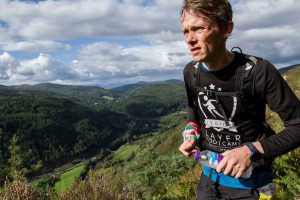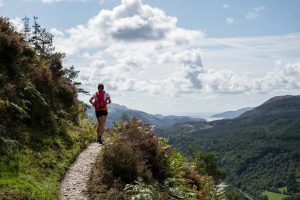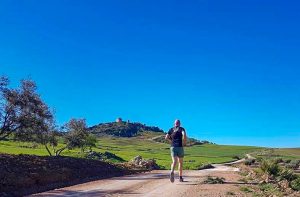One Handed Navigation tips with Ashley Charlwood
The battle of the compasses!
At some point during an adventure race or a mountain marathon, it is inevitable that you will encounter a tricky situation. Be that harsh conditions, fields of “baby heads” or a trail that has run out, you will almost certainly come to a moment where you must start thinking about the different tools that you can use to help your navigation. Picking the correct tool can not only make the day more enjoyable but much safer too.
Let us say that you have your map, and hopefully, your thumb is pinned down on your location, so you know where you are, and you also know where you want to be, the question is how do you navigate? Compass wise, there are two common options; the standard baseplate compass that we all know and love or the thumb compass (A.K.A the toy compass, as I am often teased!)
Yet despite its reputation, the ‘Toy compass’ offers simplicity as a powerful, effective, and less-confusing navigation tool for adventure racers and mountain marathon runners. Using a thumb compass, fixed to the thumb by a piece of elastic, you can navigate with one hand, keeping the other hand free should you fall … or want to eat!

Using a thumb compass is incredibly simple and while a lot of people laugh at the instrument, it is a fantastic piece of kit for a trail runner to have on hand (excuse the pun). With the compass secured to my thumb, I can pin my thumb down on the map and have the black line on the compass showing me exactly the direction I want to travel. Then all I must do is turn the whole compass and my body and off I go … and I am only using one hand to do it!
A standard baseline compass is more complex and can be used in a variety of different ways. Adjusting the Northline so the grid lines (blue lines on the map running North and South) line up with the red and white needle on the compass is one way of orienteering a map. If you have no features at that moment or are in the cloud that is a pretty simple way of doing it.
In low visibility conditions that is when bearings start to come into practice and the aspect of navigating with a base plate compass that often confuses people the most, there are so many movable parts! The map, the compass, the needle and the bezel are all movable and must be used in the correct way.

To take a bearing with a baseplate we have to line up the baseplate on the map. We have to turn the bezel so that the lines on the compass line up with the North lines on the map. Then we have to take everything away from the map and remember that we are turning the whole compass (bezel and baseplate) to line up with the North needle, giving us the direction to travel.
The more complicated baseplate compass is super useful for doing micro navigation. As conditions change, a base plate compass could be more effective to get over difficult terrains, however, for 99% of the conditions you will encounter as an adventure racer or in a mountain marathon, a thumb compass is all you will ever need.

The only other benefit to a base plate compass VS a thumb compass is that we can turn the baseplate into a number and start talking about running at 40 degrees or knowing that a mountain top is at 270 degrees from your location, making communication with others who are running with you that much easier.
Knowing your tools and knowing what you are doing with them, using them in the right place at the right time, is really important to a safe and enjoyable adventure. For me, the Thumb compass is the winner every time!
We cover these in detail (and more) on the National Navigation Award Scheme courses, Harvey Maps familiarisation days and OMM – Original Mountain Marathon training days.
Get out there! Be Adventure Smart!








